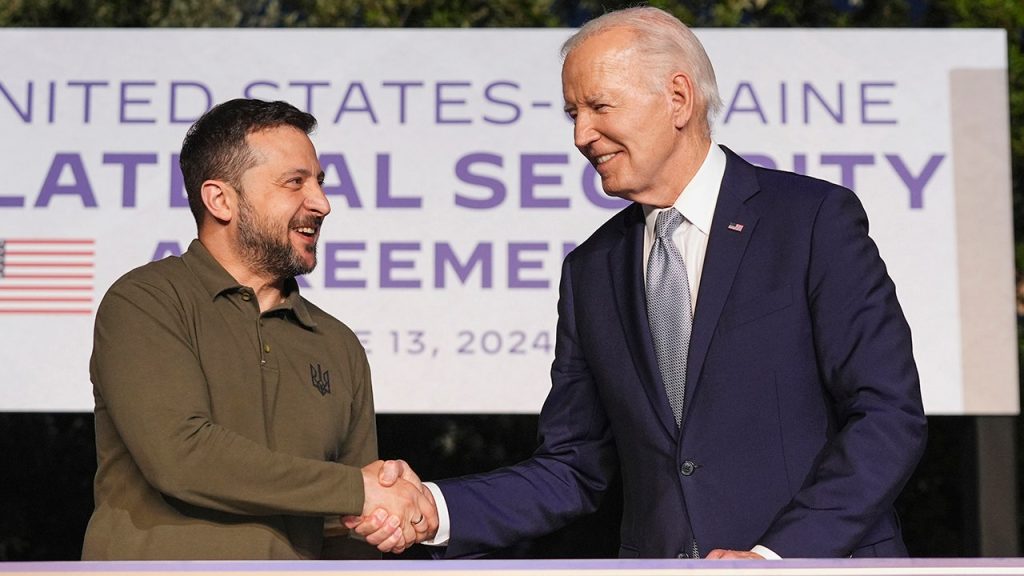The Biden administration is set to announce a significant $725 million weapons package for Ukraine, as confirmed by a U.S. official to Fox News. This initiative, coming on the heels of increased tensions following Russia’s invasion of Ukraine in 2022, includes a variety of defense resources aimed at bolstering Ukraine’s military capabilities. Specifically, the package comprises anti-tank weapons, artillery systems, drones, munitions for High Mobility Artillery Rocket Systems, and anti-personnel land mines. These weapons are intended to hinder Russian advances in areas such as the Kursk region, which has been a focal point of military aggression. This decision is being unveiled less than two months before President-elect Donald Trump is scheduled to take office, indicating a strategic response to ongoing conflicts before a potential shift in U.S. foreign policy under new leadership.
The implications of this weapons package become even more pronounced against the backdrop of Trump’s vocal opposition to the Biden administration’s Ukraine policy. Both Trump and Vice President-elect JD Vance have criticized ongoing military support for Ukraine, asserting that this approach could prolong instability in the region. On the campaign trail, Trump has made bold claims that he could end the war in Ukraine swiftly, though specifics on how he intends to achieve this remain lacking. Vance’s controversial stance, suggesting that Ukraine should concede to Russian territorial demands and establish a demilitarized zone, has already met resistance, particularly from Ukrainian President Volodymyr Zelenskyy. This proposal has sparked debate within strategic circles about the prospects for a peaceful resolution versus continued conflict.
In the midst of these political maneuvers, Ukraine continues its push for NATO membership. Ukrainian Foreign Minister Andrii Sybiha has expressed that the current moment calls for NATO to extend an invitation to Ukraine, seeing it as a necessary response to Russia’s persistent aggression. In a letter addressed to NATO leaders, Sybiha articulated the need for an alliance commitment, especially in light of recent developments such as increased personnel and resource deployments from North Korea supporting Russian operations. This plea underscores a deeper concern within Ukraine about its security situation and the perception that external alliances may serve as vital deterrents against further escalation by Russia.
Zelenskyy has also amplified this urgency, advocating for a NATO membership offer in his recent media interactions. He stressed that the resolution to the ongoing hostilities hinges on solidifying Ukraine’s defense under NATO’s protective umbrella. According to Zelenskyy, securing NATO membership would be a decisive step towards stabilizing the territory currently held by Ukrainian forces, effectively staving off Russian advances. This sentiment reflects not only a desire for enhanced military support but also a collective aspiration among Ukrainian leadership and citizens for greater integration with Western military structures.
The broader geopolitical context reveals a critical juncture for Ukraine, where the responses of NATO and the U.S. could potentially shape the trajectory of the conflict. The forthcoming NATO meeting in Brussels, highlighted by Ukraine’s plead for membership, is set to be a pivotal moment as allies consider their unified stance against Russian aggression. As Ukraine advocates for closer ties with the transatlantic alliance, there are pressing questions about the commitment of NATO leaders to support Ukraine’s aspirations while balancing their own national interests and the complexities of the international geopolitical landscape.
In conclusion, as the Biden administration prepares to deliver substantial military support to Ukraine through the new weapons package, the implications of this move echo across the political spectrum. With the incoming Trump administration signaling potential shifts in policy, the future of U.S. support for Ukraine hangs in the balance. Ukraine’s leadership is actively seeking NATO membership to fortify its defenses against Russian belligerence and asserts that this avenue could provide lasting stability. The interactions among U.S. leadership, Ukraine’s urgent appeals, and NATO’s response could serve as defining elements in this ongoing conflict, shaping not only the immediate battlefield outcomes but also the long-term regional security dynamics.


